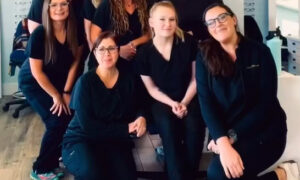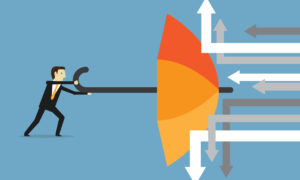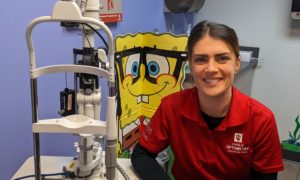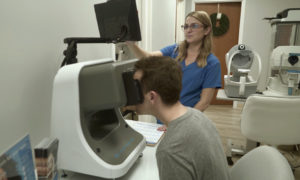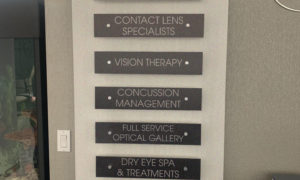
Photo credit: Getty Images
Getting your after-hours charting habit under control.
By Laurie Sorrenson, OD, FAAO
Jan. 31, 2024
I recently realized that many doctors stay after hours to “finish” or “close” charts. Some even go back to the office later in the evening or on the weekends to “finish” their charts! I had one doctor tell me she returns to the office after the kids are put to bed, and routinely works on charts until midnight.
I wanted to write a column about it because I think this could be a real problem for many reasons. It could take away precious time that could be better spent on improving business operations, handling the staff, checking out metrics and/or spending time with family!
If you are spending one hour a day “finishing charts” five days a week…that is more than half a day you could spend being a better CEO for your practice or creating more family time. That is huge!
So, I asked a bunch of doctors if they ever routinely stayed late to “finish charts,” but then figured out how to overcome that habit.
One response came from Troy Bailey, OD. He called himself a “recovering chartaholic,” which cracked me up, but was so apropos that it became part of the title of this article!
Some Felt: Why Change Anything?
I got quite a few responses. Some doctors basically told me they didn’t want to change, that spending that much time charting was important to them. To those people, no need to read this article! 😁 Or if your reaction was “What? Why aren’t they finishing the chart while they are with the patient? I have never stayed late to finish a chart!” 🤔 You may not want to read any further either.
But for those who are chartaholics, and would like more time to run a business or spend time with family, read on!
There were several tips from the “recovering chartaholics” on what they did to become less of a chartaholic.
Realize that charting after the patient leaves TAKES LONGER!
It is much more efficient to finish the chart while your memory is fresh and you are in the moment. Many doctors told me they believe it takes three times longer to do it later than at the moment. The few times I tried to finish a chart later, it probably also took me three times longer than it would if I had done it right away. So, do it NOW!
Prepping Charts Ahead of Time
Prepping charts the day before, or before the day starts (at our office, doctors prep charts the morning of for the morning and at the end of lunch for the afternoon). That preparation includes putting in pre-exam notes for the techs, putting in billing information, making notes about previous exams as a reminder and reviewing insurance coverage. This may seem like it would be time-consuming, but 10-20ish minutes a day can make a huge difference in being able to finish your charts, be more efficient and provide better care. When I personally implemented this, it made me a better doctor, with fewer billing mistakes made, and I was more efficient in the exam room.
Other Articles to Explore
Setting Time Table for Completing Charts
Oliver Lou, OD, gave me great insight as he admitted he used to be something of a chartaholic.
- He made it a rule that charts had to be finished at the end of the morning and at the end of the afternoon, so they didn’t pile up.
- He does the best he can to chart and finish the patient before moving to the next one. He said the patient doesn’t mind. He says something like, “ I want to make good notes of everything we found /covered today,” and then he charts for 1-2 minutes at a time. He learned that he charts much better in the moment than 15 minutes or hours later. So, he will take the extra minutes now, so he doesn’t have to take longer and make worse notes later.
- He said he had associates who were chartaholics too, and he helped them overcome it.
Common Reasons Given for Waiting to Chart
Here are some of the reasons Dr. Lou’s associate doctors were staying late to chart:
– Didn’t want the patient to wait. He turns that into a positive by reminding the associate that if they use his method of telling patients, “I want to take good notes,” the patient feels better cared for.
– Didn’t want the next patient waiting too long. Their office has a system in which they know how long the next patient has been waiting. Most of the time the patient hasn’t been waiting long at all, so the associate knows it is OK to take a couple of minutes to finish the chart. He celebrates with them about their chart closure rate and how much better it feels to be “done.” He spends half a day observing them chart to give them tips how to document more efficiently.
– Sometimes the associate isn’t sure what they want to write. He coaches them to do try charting two ways. The first way is to finish it the best they can and close the chart. Write any notes on a Post-It Note to be able to edit it later. The second way is to not finish the chart and let them come back to it later. They easily see how much more efficient it is to finish and close the chart, even adding the Post-It Notes, than it is to finish the chart later. Again, he will spend a half day so that he can coach them on efficiencies.
Scribes & Other Solutions to Become a Recovering Chartaholic
Some chartaholics started using scribes to help them finish their charts. Some used in-house staff and others used virtual scribes. This was very successful for many doctors. I always enjoyed having a scribe. It made my work day more fun and I was more attentive to the patient because I didn’t have to document as much myself.
Jeffrey Krohn, OD, uses an app called TextExpander to be able to take notes with only typing a few letters. He says this has made charting much more efficient. Many EHRs allow you to have defaults and drop-downs. Make sure you have utilized all these resources to be more efficient.
John McCall, OD, said he used to be a chartaholic too. He placed computers at strategic locations in his practice so that when he runs tests (he runs a lot of tests!), he can sit down and enter the results and his plan right away. He said, “It goes much faster when it’s fresh on your mind. I may run a bit behind while I’m doing it, but I always catch up. Then when I’m done…I’m done!”
Six Solutions to Try
OK, chartaholics, which will you try first?
1. Document in the moment, finish now!
2. Prep chart ahead of time
3. Make a rule to finish in the morning and afternoon
4. Hire/train a scribe
5. Use an app, drop downs or defaults to type less
6. Add strategic computers/monitors in the office
A Couple Closing Thoughts on Perils of Procrastination
“Sooner would be better than later, and now would be better than sooner.” – Tyrion”― George R.R. Martin, A Storm of Swords
“You may delay, but time will not.” – Benjamin Franklin
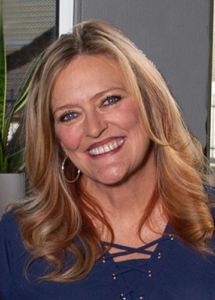 Laurie Sorrenson, OD, FAAO, is president of Lakeline Vision Source in Cedar Park, Texas, and the Professional Editor of Review of Optometric Business (ROB). To contact her: lsorrenson@gmail.com.
Laurie Sorrenson, OD, FAAO, is president of Lakeline Vision Source in Cedar Park, Texas, and the Professional Editor of Review of Optometric Business (ROB). To contact her: lsorrenson@gmail.com.

